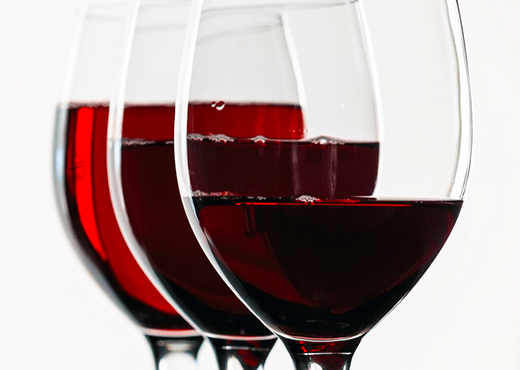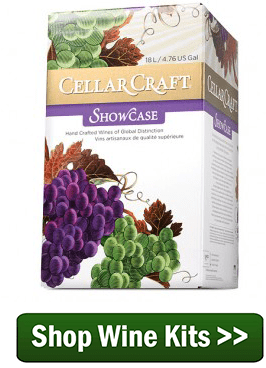 How can I give my red wine more color? I’m new at wine making.
How can I give my red wine more color? I’m new at wine making.
Jerre M. — TN
—–
Hello Jerre,
Adding more color to your wine is something that is easy to do when you are making it. The color pigmentation mostly comes from the skin of the grape. To add more color you leave the skins in the fermentation longer. This can be done for up to 7 days for maximum color.
Time plays a dramatic role in the color of the wine. If the skins are not in the fermentation at all, you will get a pink or blush-colored wine. This small amount of color is from what is released into the juice while crushing the grapes. Leave the skins in the fermentation for three days, you might get a ruby-colored wine. Seven days, you could end up with a wine that has an inky-dark color.
Results will very as to the hue of the wine (red brick to purple), but this should give you some idea as to the role time and grape skins play in adding more color to a wine.
So far we have been talking about grapes, but the same can be applied to many fruits: blackberries, raspberries, blueberries, even strawberries, and others. All will contribute more color to the wine when left in the fermentation longer.
There is a tradeoff. Along with the color comes more tannin. This is the stuff that adds body and structure to the wine. For most wine drinkers this is considered to be a good thing. The wine will be bigger, bolder, more aromatic and typically more layered in its flavor profile.
 The tradeoff comes in the amount of aging the wine will need before it starts to taste pleasant. In short, the more time the skin is in the fermentation, the more time the wine will need to age before its harshness starts to subside. Exactly how much time is something that will vary from one wine to the next, but suffice it to say that it may be several years for the darkest of wines while maybe only three to six months for a blush wine.
The tradeoff comes in the amount of aging the wine will need before it starts to taste pleasant. In short, the more time the skin is in the fermentation, the more time the wine will need to age before its harshness starts to subside. Exactly how much time is something that will vary from one wine to the next, but suffice it to say that it may be several years for the darkest of wines while maybe only three to six months for a blush wine.
If you are referring to adding more color to a wine that has already been made, there’s not much you can do. You can try making another batch of the same wine, only with more color, and then blending the two before bottling. The second wine could even be made with next year’s grapes. Just let your first wine bulk age for a while.
If you ultimately like your wines sweet, you can experiment with adding Welch’s grape concentrate to sweeten the wine. This will also add more color to the wine. It will also add more fruit acid to the wine. You will need to be careful not to make the wine too acidic. It would not be a bad idea to use an acid test kit to keep track of how much acid is being added to the wine by the Welch’s grape concentrate. You will also need to add potassium sorbate to the wine, just like any other time you would sweeten the wine. This is to keep the wine from starting a renewed fermentation with the new sugars from the concentrate.
As you can start to see, adding more color to a wine is not all that cut and dry. There are other considerations that need to made as well. Do you really want to make a big wine that might not be drinkable until next year? Do you really want to make your wine sweet by adding Welch’s grape concentrate for color? There are always tradeoffs.
The only thing I can really say is color does not make the wine. It is only visual cue as to what to expect. There are excellent wines of all colors: light and dark.
Best Wishes,
Ed Kraus
—–
Ed Kraus is a 3rd generation home brewer/winemaker and has been an owner of E. C. Kraus since 1999. He has been helping individuals make better wine and beer for over 25 years.

I enjoy reading your comments an solutions to problems very much . Keep up the good work. I have learned very much from your articles.
I also like reading your solutions to wine issues. I would like to learn more on using and calibrating my PH meter and how long does it stay calibrated and any other useful information on the subject.
Thanks Mike
I second the request for an article on calibration of the ph meter. I think I made an error this fall perhaps by using calibration solution that was too old.
I really enjoy reading your advice. Your articles are always interesting and are more suggestive than directive thus allowing your readers to be their own vintners and enjoy the craft of wine making.
I just tried adding a small amount of prickly pear cactus fruit with my muscadine grapes and achieved a very nice color with no change in flavor.
I like reading your comments. they are very informative.